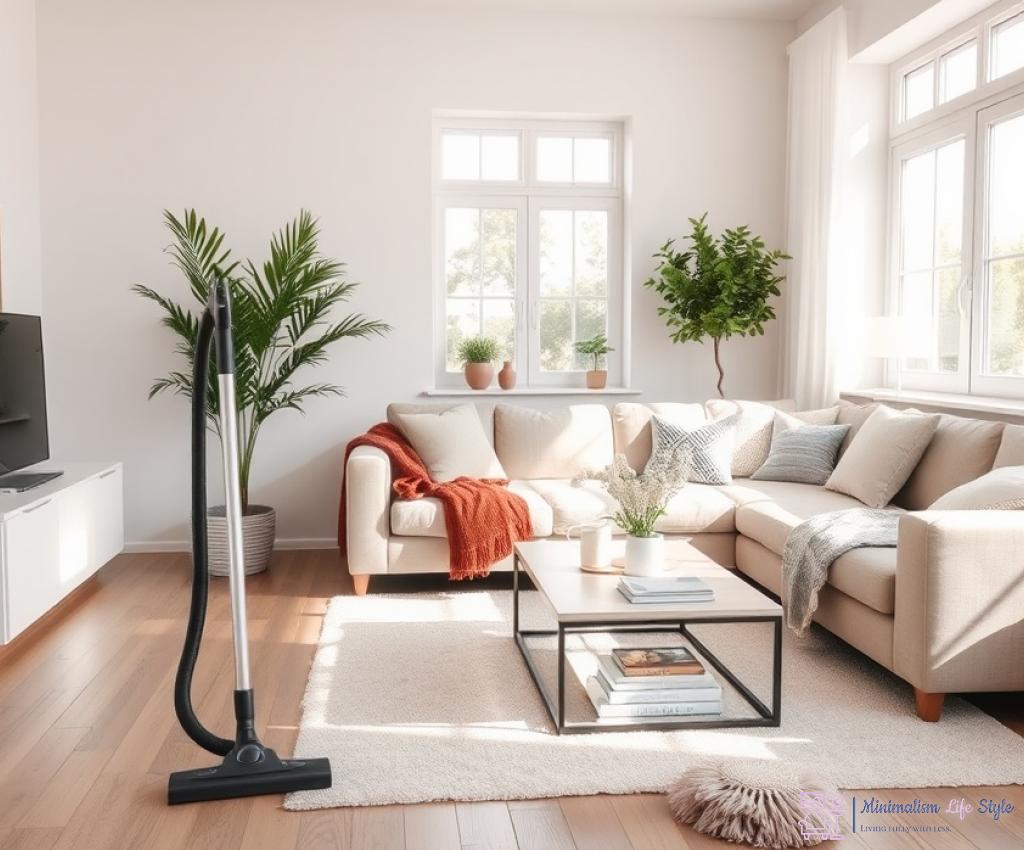The Power of a Daily Cleaning Routine

Imagine stepping into your home and feeling an instant wave of calm wash over you. A clean and organized space does more than just look good; it enhances your mood and productivity. A daily cleaning routine is the secret weapon that can turn this dream into reality. By dedicating just a few minutes each day to tidying up, you can create an environment that feels welcoming and serene.
Establishing a daily cleaning routine is not merely about keeping your home tidy; it’s about fostering a sense of discipline and accomplishment. When you commit to cleaning a little every day, you not only maintain your living space but also reap a plethora of benefits. Here are some key advantages of a daily cleaning routine:
- Reduced Stress: A clutter-free home helps minimize anxiety and promotes relaxation.
- Time Efficiency: Daily cleaning prevents larger messes from accumulating, saving you time in the long run.
- Healthier Environment: Regular cleaning reduces allergens and germs, promoting better health for you and your family.
- Enhanced Productivity: An organized space allows for better focus and efficiency in your daily tasks.
Creating a daily cleaning routine doesn’t require a complete overhaul of your lifestyle. With a few simple steps, you can easily incorporate cleaning into your day-to-day activities. Start small and gradually build your routine. Here’s a straightforward list to help you get started:
- Morning Tidying: Spend 10-15 minutes making your bed, putting away dishes, and decluttering surfaces.
- Evening Wind Down: Dedicate 10 minutes before bed to tidy up common areas and prepare for the next day.
- Weekly Focus: Assign specific tasks to each day (e.g., vacuuming on Mondays, dusting on Tuesdays) to keep your home consistently clean.
Weekly Focus: Tackling High-Traffic Areas
In every home, there are certain spots that bear the brunt of daily activity. These high-traffic areas, such as entryways, kitchens, and living rooms, can quickly become cluttered and dirty if not addressed regularly. By implementing a focused cleaning strategy for these zones, you can maintain a sense of order and make your daily cleaning routine even more manageable.
When it comes to cleaning high-traffic areas, the goal is to prioritize spaces that have the greatest potential to affect your overall home environment. These locations often serve as the first impression for guests and play a crucial role in your daily life. Therefore, dedicating time each week to these areas can yield significant benefits. For instance, a clean kitchen not only enhances your cooking experience but also contributes to a healthier lifestyle by reducing the risk of contamination from food particles and spills.
To tackle high-traffic areas effectively, it’s essential to develop specific strategies tailored to each space. Begin with the entryway, where dirt and clutter accumulate from shoes and bags. Implement a system of hooks and baskets to create an organized landing zone for belongings. Moving to the kitchen, focus on maintaining clear countertops and regularly sanitizing surfaces where food is prepared. This can prevent messes from escalating into larger cleaning jobs. In the living room, incorporate a few minutes of tidying up before winding down for the evening. This simple act can transform the room into a cozy haven for relaxation. By establishing these targeted cleaning approaches, you can avert the chaos that often accompanies busy households.
A clean and orderly home has a profound effect not just on your stress levels, but also on your overall well-being. When you prioritize high-traffic areas, you create a ripple effect that encourages everyone in the household to embrace cleanliness. This shared responsibility fosters a culture of tidiness, making it easier for everyone to contribute to maintaining a harmonious living environment. Furthermore, a clean space can lead to increased productivity, allowing you to focus on what truly matters without the distraction of clutter. Ultimately, a little effort in high-traffic areas can lead to big rewards throughout your home.
Monthly Deep Cleaning: Essential Tasks

As the month rolls around, it’s time to shift gears and elevate your cleaning game with monthly deep cleaning. This practice goes beyond the daily tidying rituals and dives into the hidden corners of your home that often get overlooked. While daily and weekly cleaning routines keep your space looking presentable, monthly deep cleaning ensures that your home remains a sanctuary of peace and order. By dedicating time each month to tackle these essential tasks, you’ll not only maintain cleanliness but also safeguard the longevity of your belongings.
Monthly deep cleaning is an opportunity to give your home that thorough scrub it deserves. Think of it as a reset button for your living environment. Focus on areas often neglected during daily cleaning, such as baseboards, light fixtures, and behind large furniture. Dust tends to accumulate in these places, and addressing them monthly can significantly improve air quality and overall aesthetics. Imagine the satisfaction of walking into a room that sparkles from top to bottom, free of the dust bunnies and grime that had settled in.
To make your monthly deep cleaning effective, consider creating a blueprint that outlines specific tasks for each month. For example, one month you might focus on your kitchen appliances, ensuring that your refrigerator and oven are spotless and functioning efficiently. The next month could be dedicated to refreshing your bathrooms by scrubbing tiles, disinfecting surfaces, and replacing worn-out shower curtains. This methodical approach not only keeps your spaces cleaner but also breaks the overwhelming task into manageable chunks that fit seamlessly into your schedule.
Moreover, involving family members in this process can foster a sense of teamwork and responsibility. Assign different areas to each person, making deep cleaning a collaborative effort that empowers everyone in the household. By sharing these tasks, you not only lighten the workload but also cultivate a shared appreciation for a clean and organized home.
Simplifying Your Cleaning Supplies
In the quest for a clean and organized home, the tools we use play a crucial role. However, an overwhelming collection of cleaning supplies can lead to confusion and frustration, detracting from the simplicity of your cleaning routine. A streamlined approach to your cleaning arsenal can make all the difference, allowing you to maintain a tidy living space with minimal effort. By simplifying your cleaning supplies, you not only enhance your efficiency but also create a more enjoyable cleaning experience.
Embrace the Core Essentials – The first step in simplifying your cleaning supplies is to identify the core essentials that suit your cleaning needs. A basic toolkit typically consists of a few multi-purpose cleaners, a good set of microfiber cloths, a broom, a mop, and a vacuum cleaner. By focusing on these fundamental items, you can effectively tackle most cleaning tasks around your home without the clutter of unnecessary products. Not only does this approach save space, but it also ensures that you’re not overwhelmed by choices every time you prepare to clean.
Evaluate and Eliminate – Take a close look at your current cleaning supplies. Are there items that have gone unused for months or even years? Evaluate each product based on its effectiveness and frequency of use. If a product hasn’t proven its value in your routine, it’s time to let it go. This not only reduces clutter but also makes it easier to find the tools you actually need. By eliminating the excess, you create a more streamlined and efficient cleaning process, allowing for quick access to the supplies that truly matter.
Creating a Functional Storage System – Once you have simplified your cleaning supplies, the next step is to establish a functional storage system that keeps everything organized. Consider using a designated cleaning caddy or basket where you can store your essential products. This way, all your supplies are in one place, making it easy to grab and go when it’s time to clean. Additionally, labeling each item or section can further enhance the organization, ensuring that you always know where to find what you need. A well-organized space not only looks good but also motivates you to maintain your cleaning routine.
Creating a Cleaning Schedule That Sticks
Creating a cleaning schedule that truly works for you is all about establishing a rhythm that fits seamlessly into your daily life. The first step is to assess your personal routine and identify the times when cleaning can be most effective without feeling like a chore. Many find that early mornings or late evenings provide the perfect backdrop for these tasks. The key is to **prioritize consistency**; when you make cleaning a regular part of your day, it becomes a habit rather than a burden.
As you embark on this journey to a cleaner home, consider the unique needs of your living space. Take stock of areas that require more attention and those that can be tidied up with minimal effort. For instance, kitchens and bathrooms often need frequent cleaning due to their heavy usage. By tailoring your schedule, you can ensure that high-traffic zones receive the focus they deserve. It’s also beneficial to incorporate a mix of quick daily tasks alongside more intensive weekly or monthly cleaning efforts. This way, you won’t overwhelm yourself with long lists of chores. Instead, you can look forward to tidying up small areas each day that collectively contribute to a **sparkling home**.
While implementing a cleaning schedule is a significant step towards a clutter-free environment, maintaining motivation over time can present its own challenges. One effective strategy is to **set achievable goals** and reward yourself upon completion. Perhaps treat yourself to a favorite activity or indulge in a small treat after a week of sticking to your schedule. Additionally, consider enlisting family members or roommates to share the responsibility. Establishing a cleaning buddy system not only fosters teamwork but also adds an element of fun to the process. When everyone is engaged, it transforms cleaning from an individual task into a communal activity, making it easier to uphold that commitment to cleanliness.




